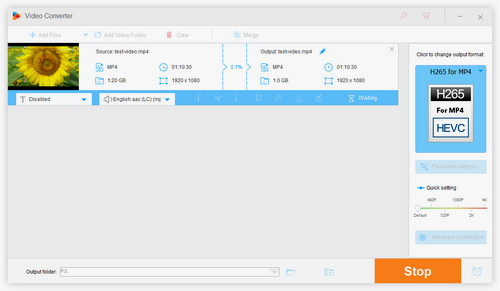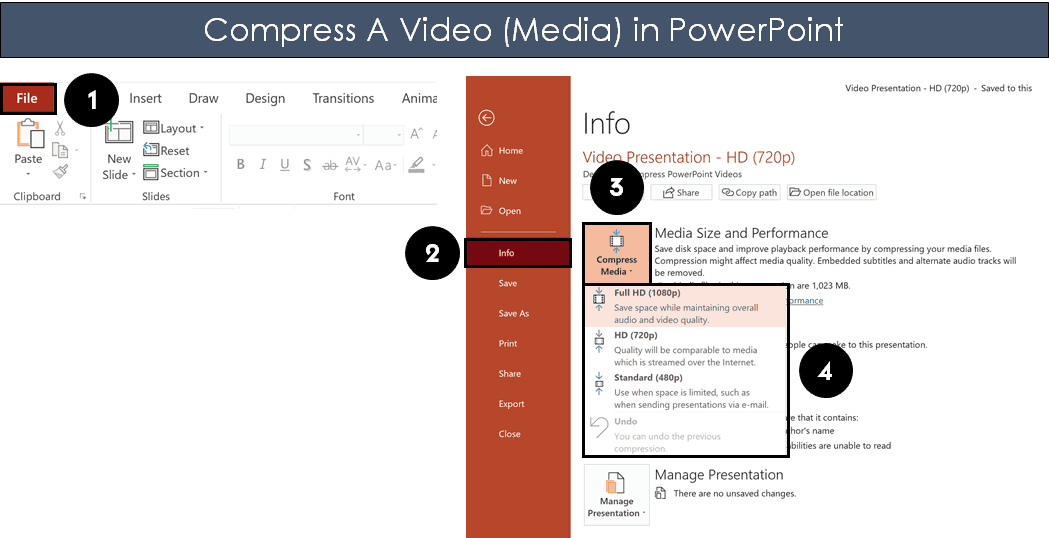
- Media file size reducer Offline#
- Media file size reducer free#
Thus, when ranking our sources, we want to put the the source with the lowest file size at the top. The browser automatically selects and plays the first compatible source. So, why do we create 4 variants? That's because we can configure multiple sources for a HTML. , output-avc.mp4 are the names of the newly created output files.
The -tag:v hvc1 flag at libx265 ensures that Safari (and Apple) recognize the video as HEVC. We use -vf scale=1280:-2 to downscale the aspect ratio, but feel free to leave this out as well.We put the -an flag in there to remove the audio, but feel free to leave it out.We set -b:v 0 to zero to have a constant quality, but you can use a constrained quality by setting it to a value higher than 0.
 -crf adjusts the Constant Rate Factor: the lower the value, the higher the quality and file size. We use libaom-av1 for AV1, libvpx-vp9 for VP9, libx265 for HEVC and libx264 for AVC. -i input.mp4 sets the input file, which is input.mp4 in our case. We use the following flags in the above terminal commands to generate our four 4 files. From an input file input.mp4 (typically encoded in H.264), we create 4 output files using 4 different codecs: AV1, VP9, HEVC (=H.265) and AVC (=H.264). We use ffmpeg if we have the patience ( and need!) to create the most optimal compression of a video file. (🎯 Users must understand the content of our videos and may enjoy its visual quality.) 1. Compression strategiesĪt ottball, we employ three strategies for our objective. You can also build your own video streaming infrastructure by connecting (or building) encoding, transcoding and packaging services/software with web servers and CDNs. We recommend you to consider an OVP if your viewers require the best possible video UX – and if you are new to video streaming. Using an OVP is considered "the next step" if you're serious about video. The OVP might also package them into an adaptive manifest which allows you to do HTTP Adaptive Streaming. The OVP transcodes your video into multiple renditions – in different codecs and dimensions. Typically, an OVP offers (an) online tool which allows you to upload videos to their servers (or to your on-premise/local storage). This advantage is also its disadvantage: you need to know more about encoding configurations and the API of the CLI to achieve the optimal compression.Īn Online Video Platform (OVP) is a GUI and/or CLI offered by (commercial) companies in the video streaming industry. This video player picks the most optimal quality for your viewer.Ĭommercial tool to do adaptive streaming.Ī Graphical User-Interface (GUI) is the most user-friendly tool to reduce the size of a video.Ī Command-Line Interface (CLI) allows you to tweak more encoding parameters than a GUI – because a GUI often uses a CLI under the hood. The service produces a video player widget which you can embed on your website. Takes the most time to master but yields the highest reward.įree online tool where you can upload your videos.
-crf adjusts the Constant Rate Factor: the lower the value, the higher the quality and file size. We use libaom-av1 for AV1, libvpx-vp9 for VP9, libx265 for HEVC and libx264 for AVC. -i input.mp4 sets the input file, which is input.mp4 in our case. We use the following flags in the above terminal commands to generate our four 4 files. From an input file input.mp4 (typically encoded in H.264), we create 4 output files using 4 different codecs: AV1, VP9, HEVC (=H.265) and AVC (=H.264). We use ffmpeg if we have the patience ( and need!) to create the most optimal compression of a video file. (🎯 Users must understand the content of our videos and may enjoy its visual quality.) 1. Compression strategiesĪt ottball, we employ three strategies for our objective. You can also build your own video streaming infrastructure by connecting (or building) encoding, transcoding and packaging services/software with web servers and CDNs. We recommend you to consider an OVP if your viewers require the best possible video UX – and if you are new to video streaming. Using an OVP is considered "the next step" if you're serious about video. The OVP might also package them into an adaptive manifest which allows you to do HTTP Adaptive Streaming. The OVP transcodes your video into multiple renditions – in different codecs and dimensions. Typically, an OVP offers (an) online tool which allows you to upload videos to their servers (or to your on-premise/local storage). This advantage is also its disadvantage: you need to know more about encoding configurations and the API of the CLI to achieve the optimal compression.Īn Online Video Platform (OVP) is a GUI and/or CLI offered by (commercial) companies in the video streaming industry. This video player picks the most optimal quality for your viewer.Ĭommercial tool to do adaptive streaming.Ī Graphical User-Interface (GUI) is the most user-friendly tool to reduce the size of a video.Ī Command-Line Interface (CLI) allows you to tweak more encoding parameters than a GUI – because a GUI often uses a CLI under the hood. The service produces a video player widget which you can embed on your website. Takes the most time to master but yields the highest reward.įree online tool where you can upload your videos. Nameįree and extensive offline tool to manipulate video. The following GUIs, CLIs and OVPs can be used to compress video files.

Can you guess which half is which? Tools to reduce video file size 🛠

We merged two halves of an H.264 (32.2 MB) and an AV1 (1.5 MB) video frame together. A super slow website may result in Chrome giving you a badge of shame 2. Reducing the video file size results in faster downloads. Why? Smaller videos save storage and bandwidth. Are you looking for a tool to compress videos for websites or (Wordpress) blogs? This article walks you through tools and strategies to reduce the size of a video file.







 0 kommentar(er)
0 kommentar(er)
